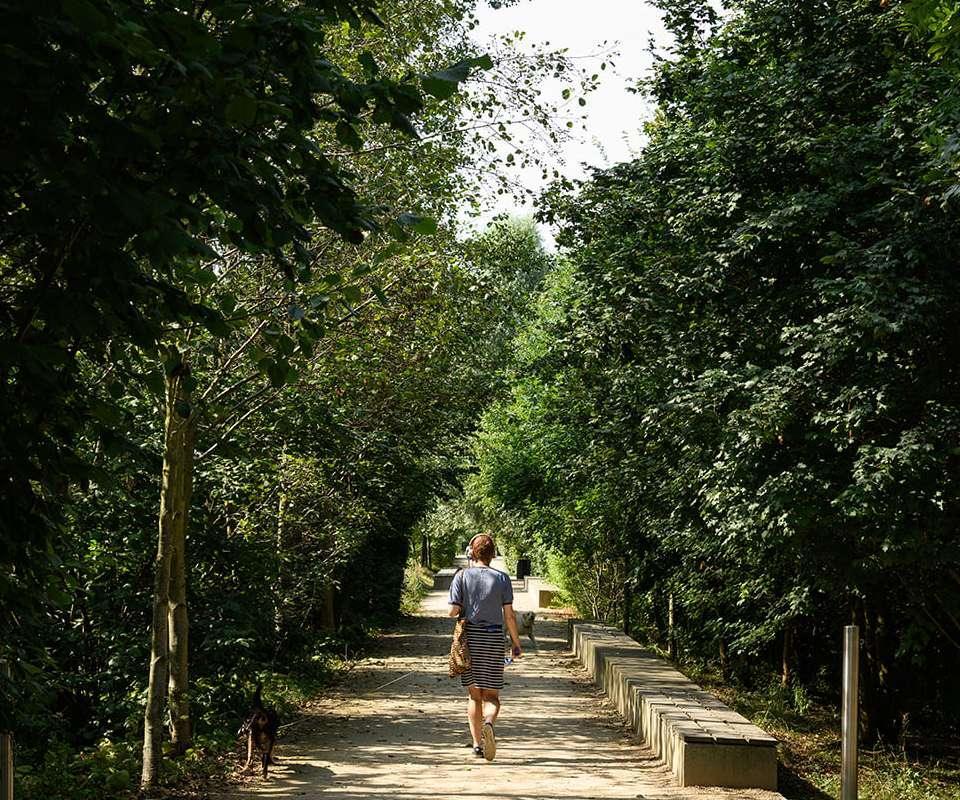
Civity is a leading company in Biodiversity Net Gain (BNG)
We sell BNG Units and offer Biodiversity Net Gain solutions to landowners, authorities, developers, and educational institutions.
Civity is a leading biodiversity net gain company with an expanding landbank that developers can use to demonstrate a biodiversity net gain (BNG) and get planning approval. We are authorised to sell BNG Units, conduct land surveys, assess land using biodiversity metrics, and protect and restore wildlife habitats.
Ecology is our ancestry. We have knowledge of both the built environment and the ecology of rural wildlife. We serve as consultants to developers, landowners and local authorities.


Biodiversity Net Gain: A Legal Requirement
On the 12th February 2024, the Environment Act Became law became
law. Consequently, developers need to show a Biodiversity Net Gain of at least 10%:
the difference between the biodiversity value of the land before and after
development. Planning permission will not be granted without a 10% biodiversity
gain valued by a qualified ecologist at the time of application.
Our landbank is a source of BNG Units available to developers to offset the impacts they cannot deal with on-site, an opportunity for landowners to make financial gains from unprofitable land and support local planning authorities with biodiversity consultation if and when required. Perhaps the greatest benefit is to the environment; Civity is an established ecologist company helping to preserve the land for the future of wildlife and mankind in this country.

BNG Resources & Events
Curchods Biodiversity Net Gain Seminar 2024
- Recording From Curchods Estate Agents
- Duration: 1hr 31 minutes
- Hosted by our Civity team James & Lyvy
We had the privilege of speaking at the Curchods Biodiversity Net Gain Seminar 2024, where James and Lyvy delivered a fantastic presentation on Biodiversity Net Gain (BNG).

Biodiversity Net Gain (BNG) for Stakeholders

Connecting the right partners
BNG is a mandated standard in law, it becomes central to the consideration of all development proposals.
Imperfect market conditions prevail, hence the need for an expert integrator of interests to maximise the natural capital benefits from Biodiversity Net Gain.
That’s where we come in.
BNG for developers
Developers can create their own BNG Units from their development site; the preferred option. Alternatively, units can be created from suitable land they already own or wish to buy but this will lock up funds perhaps better used for their core business. They will need to show they can manage the land as an approved habitat for a minimum of 31 years.
Or they may prefer to deal with a company like Civity, which is approved to sell BNG Units. This option would be free of risks, obligations, tied-up assets and ongoing costs over the 30-year period demanded by law.


How landowners can benefit from biodiversity
Many landowners will have pockets of unprofitable land already acting as sanctuaries for wildlife or land that could be easily managed to create new habitats. Civity will become your tenants, guaranteeing a long-term lease of pockets of land of 5 hectares or more. In addition, we enter into a contractual agreement with you to create and manage habitats on your land and pay you for doing this. As your consultant, Civity will hold your hand throughout and take any liability for the sale of units, monitoring and reporting.
How Civity can help local authorities with BNG
The Environment Act imposes additional burdens on planners by adding an extra process on the route to planning permission. Civity has been a leading player in forming a commercial market for units and can support planners in reconciling their responsibilities under the new law with minimum compromise and maximum benefit to the community.


Our BNG FAQs
Biodiversity encompasses the variety of life forms and ecosystems that exist within a given area. It includes all living organisms, from plants and animals to microorganisms, as well as the habitats they depend on. When new developments are proposed, it is crucial to consider the potential impact on the existing biodiversity.
As environmental protection and habitat conservation gain increasing importance, biodiversity has become a primary concern in the planning and execution of new projects. Developers must carefully assess how their plans may affect the delicate balance of local ecosystems and take steps to minimize any negative consequences.
Protecting biodiversity involves preserving the natural habitats that support a wide range of species, as well as ensuring that development activities do not disrupt the ecological processes that maintain these ecosystems. By prioritizing biodiversity conservation, we can help safeguard the health and resilience of our natural world for future generations.
Biodiversity Net Gain is a measure of the variety of wildlife in a natural environment, essential for developers and effective land management. It’s a measure of how rich in species an area is, or how much rare or innately valuable wildlife is present in the natural environment. A Biodiversity Net Gain is the difference between the ecological loss caused by a development’s land take and the compensating ecological gain on the same or on other sites. It is a crucial aspect of the Environment Act 2021, emphasising the need for developers to consider sustainable land management practices that contribute to deliver biodiversity net gain, including efforts to create wildlife habitats. The principal aim of this act is to leave the natural environment in a measurably better state than it was. Planning permission for qualifying building development can be granted without proof of a minimum 10% Biodiversity Net Gain, underscoring the significance of developers’ commitment to responsible land management that includes delivering biodiversity net gain.
When development projects takes place, there is always some damage to the ecology of the site. The Environment Act 2021 makes it mandatory to compensate for resulting biodiversity loss. The compensation can be done by creating new habitats or enhancing the value of existing habitats. When this compensation is done offsite, away from the development site, it is called a Biodiversity Offset.
The UK’s increasing population has made corresponding demands on developers, land managers, and existing habitats. This now seriously affects our lives and the ecology of our wildlife, so the government has intervened, not just to halt further decline, but to build, repair, and maintain habitats and to help preserve the environment for future generations.
Biodiversity Offsets present an opportunity to pool significant resources from multiple developments into large, well-designed, and strategic habitat creation projects. This approach, in line with the biodiversity net gain approach and local nature recovery strategies, will result in the creation of ‘bigger, better, and more joined up’ ecological networks for our wildlife habitats, enhancing the connectivity of existing habitats.
If a development site is unable to produce a 10% increase in the difference between its pre- and post-biodiversity value on site, it must offset the loss by acquiring Biodiversity Units elsewhere. Under the terms of The Environment Act, the gain should be onsite and, if this is impossible, close to the development site. If that is not possible, Biodiversity Units may be bought further afield but their value may be reduced.
Biodiversity Metric 4.0 is a biodiversity accounting tool created by Natural England that can be used for the purposes of calculating Biodiversity Net Gain. It is a key tool that supports the delivery of Biodiversity Net Gain and is used to calculate the baseline biodiversity value of a site in terms of biodiversity units, and forecast its future biodiversity value. It is the standard biodiversity measurement designed for use by ecologists, developers, planners, and other interested parties.
Biodiversity Net Gain differs from previous local plans laws in that the Environmental Act 2021 makes the biodiversity gain mandatory. The mandatory Biodiversity Net Gain is legally secured between two (or more) consenting parties, private or public, using a Section 106 agreement (securing the land for biodiversity purposes) or a Conservation Covenant.
This is the major change to the Planning rules: The Environment Act sets out a ‘general condition’ that should be applied to all planning permission applications, requiring a Biodiversity Gain plan to be submitted and approved before the start of development, ensuring that biodiversity net gain requirements are achieved on site.
DEFRA and Natural England are preparing a ‘site register’ of approved biodiversity offsetting land. This register may be formed by multiple different providers, including landowners themselves, private brokers, land banks, or local planning authorities.
The ultimate gain is for the environment. The time has come for everyone. Who uses the environment for self-interest to make a significant contribution for its preservation. For developers, a making Biodiversity Net Gain of 10% minimum is a mandatory requirement to obtain planning permission from the local planning authority; for landowners, unproductive land can produce a revenue stream in the form of rent and management funding for 31 years without loss of access. Together, developers and landowners can dovetail their interests for the benefit of future generations.
BNG units and BNG credits both relate to Biodiversity Net Gain, but they serve different purposes. BNG units are site-specific measures of biodiversity value, calculated based on habitat type, condition, and distinctiveness. BNG credits, on the other hand, are purchased when on-site or local off-site compensation is not possible, allowing developers to meet biodiversity requirements through third-party providers. Understanding the difference between BNG units and credits is crucial for effective planning and compliance.

For More FAQs
Developers
Local Planning Authorities
Landowners
Schools

More About BNG:
Need Help With Biodiveristy Net Gain?
Please contact us if you’d like to start a conversation about how our company can assist you with your BNG needs



